Hey everyone!
This week, we discuss about one of our favourite cameras (I know, we have so many favourite ones); the Polaroid Land Camera! People have been asking us about our newest addition(s), so we decided to share our perspective and thoughts on the old-fashioned but fully-functioning instant Polaroid camera!
Since our fixation with instant photography began, we have used the Instax Wide/Mini film (by Fujifilm) and the Impossible Project film (which is the Polaroid, square-sized film e.g. for SX-70/600). We are also aware that there are many different types of film out there such as the large format 4×5 (e.g the New99 film), the Polaroid Spectra and the 8×10 (both by Impossible Project).
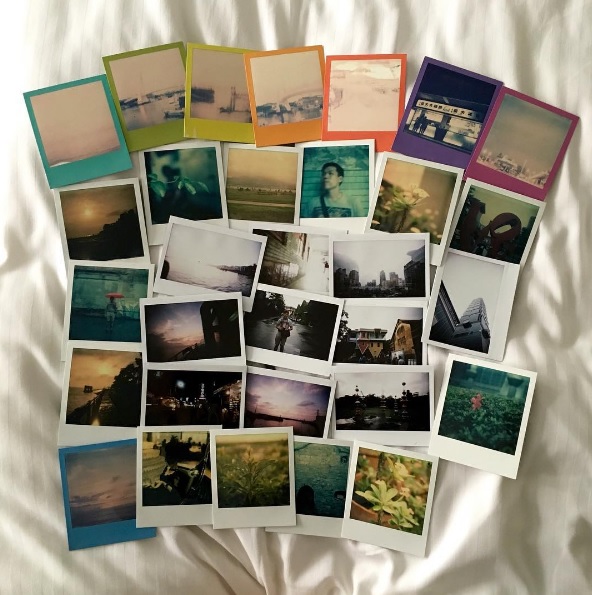
At the outset, we would like to point out that this is not a review about the Land Camera (although we hope do one in the near future)! Instead, this will be an exposition about the Land Camera and the different models, the current challenges behind its use (especially with the announcement that the last usable packfilm (or peel-apart film) made by Fujifilm will not be produced anymore) and how the camera community (us included) have overcome some of these hurdles.
The History of the Land Camera
Believe it or not, there are different models of the Land Camera. The name derives from its inventor, Edwin Land, who later co-founded Polaroid; his cameras were the first to employ a process of instant film development (by transferring dyes from the negative to the positive film). There are different types of Land Cameras which employ a) rollfilm or b) pack film. We will be exploring these types of cameras later on.
Our Land Cameras!
Since our foray into the world of Land Cameras, we have since acquired a few Land Cameras: the Polaroid 180 Land Camera, the Polaroid 250 Land Camera, which are pack film cameras, and the Pathfinder 110B which is a rollfilm camera.
What caught our eyes about these Land Cameras were due to a number of reasons:
- The bellows: it looks cool!
- The mechanism: some of the Land Camera models do not require batteries, which is an advantage for ensuring extended functionality.
- The lens: made by Zeiss Ikon (its modern iteration, Carl Zeiss, remains hugely popular among camera enthusiasts), the glass lens (found in more advanced models) are top-quality, and produces sharp and clear images till this day.
- The range-finder: unlike the zone-focusing camera (whereby one has to ‘guess’ the distance from the object to be captured to the camera), the range-finder allows the user to focus instantly on the object.
- The film: the use of the peel-apart instant film (or rollfilm) is an experience in itself; from snapping the shot, to waiting for the development of the film and finally peeling off the negative from the image!
Polaroid 180 and 250 (Pack film cameras)
The Polaroid 180 and 250 looks almost the same aesthetically, but the key difference is that the former is a fully-manual camera, whereas the latter is an automatic camera. Both cameras were made in the late 1960s. The Polaroid 250 was refurbished and works excellently, but the Polaroid 180 was bought as is, and thus we are getting it fixed.

The choice of film for the Polaroid 180 and 250 is the Fujifilm FP-100c pack film.

As described above, the photo is captured onto a negative, and through the rollers found in the camera, the reagent causes the image to be transferred onto the positive film. We loved the quality of the image, which was much more sharp than the Instax Mini/Wide films. The FP-100c film is cheaper than the Impossible Project film; further, it can be used for emulsion lifts (you can see an example here). That being said, one needs to be aware of the drying time (which varies according to air temperature) and there may be chemicals present on the positive film, so be careful!
Here are some shots we took with our Polaroid 250:
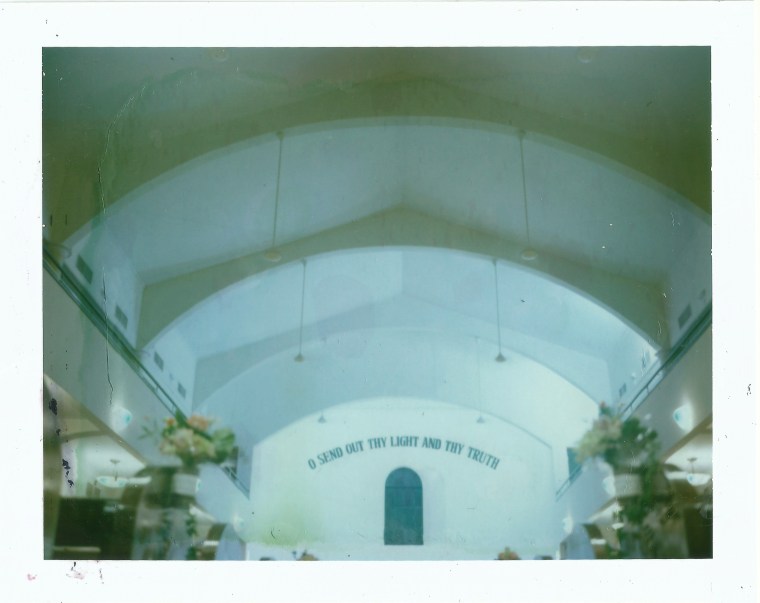





Pathfinder 110B: (rollfilm camera)
The Pathfinder 110B is an even earlier version of the Polaroid 180 and 250, and used the rollfilm; the camera is fully manual, and had no aid from an electric eye.

The Pathfinder 110B used rollfilm, which means that the Pathfinder became ‘irrelevant’ since rollfilm was discontinued is 1992. It is unfortunate that we were unable to take any photos using the rollfilm.
Is this the End of the Land Camera?
As alluded to above, Fujifilm has since ceased manufacturing of the last ever peel-apart instant film made for certain models of the Land Camera, the FP-100C packfilm. This is a huge blow to recently-minted Land Camera admirers (such as ourselves). We have had only discovered this amazing camera at the start of 2016, and we were distraught that the most essential component of the Land Camera was being discontinued.
We have since managed to get our hands on a number of FP-100C films (those being the last stock) and are saving it preciously for future usage. It is clear that the price of the FP-100C films will rise (and has already risen), and it is not a viable option to purchase the pack film in the future.
But of course, the human mind is truly creative and ingenious sometimes…
Making it Work
We have discovered some truly remarkable ways to make the Land Camera relevant again (with no small amount of thanks to the online camera community), and we do hope that by sharing with you our efforts and lessons, you too would be inspired to get your own Land Camera too!
Alternative Films (for pack film cameras)
This method may be slightly laborious, but it does reap results! The idea is to a) use alternative films which can be slotted into the FP-100C cartridge, and then developing the alternative films, or b) slot alternative film cartridges into the cartridge holder of the pack film cameras. Below, we describe two alternative films that we have used with our Polaroid 250: the Instax Wide film and the Impossible Project (SX-70/600) films. This technique can be applied for all packfilm cameras!
Using Instax Wide film
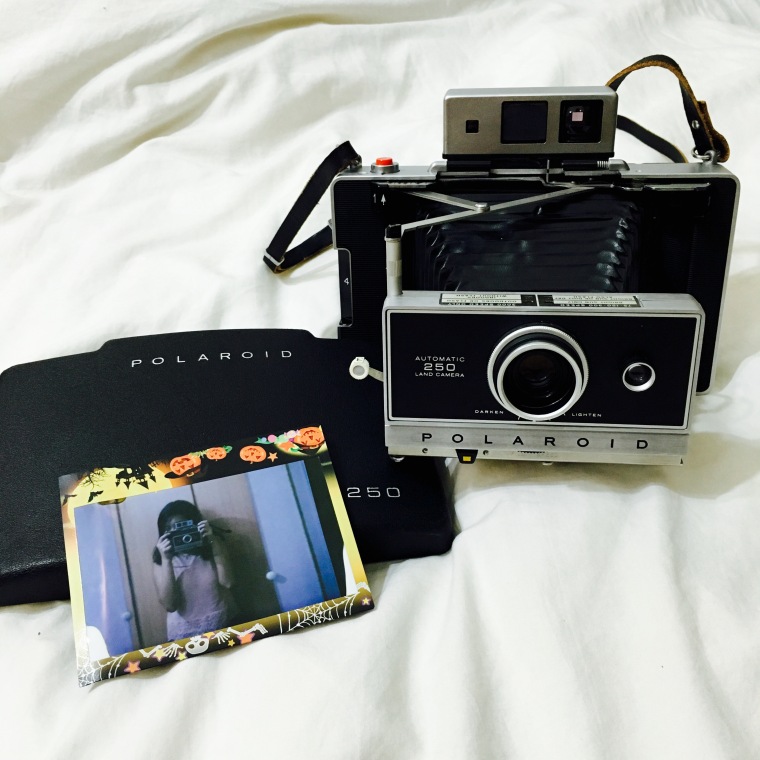
These are the steps, which we learnt from J Caldwell for Snapitseeit:
- In a dark room (or a darkroom bag), we inserted 1 unexposed Instax Wide film inside an empty FP-100C cartridge.
- We then inserted the said cartridge inside the Polaroid 250.
- With the unexposed Instax Wide film inside the Polaroid 250, we adjusted the camera setting to match the ISO 800 film.
- After taking the desired shot, we took out the exposed, undeveloped film (inside the darkroom bag of course) and inserted it into the Instax Wide cartridge.
- We then took the said cartridge and loaded it into our Lomo’Instant Wide camera.
- After that, we triggered the camera and let the exposed Instax Wide film develop through the rollers.
- Tadah; enjoy the film!
We should highlight that transferring any undeveloped film should be done inside a dark room or darkroom bag to avoiding exposing the undeveloped film to light.
Using Impossible Project film

These are the steps, as seen on Snapitseeit:
- Insert the Impossible Project (SX-70/600) film cartridge (assuming it is full) into the respective Polaroid SX-70/600 camera. This should automatically eject the dark slide.
- In a dark room/darkroom bag, we inserted the said cartridge into the Polaroid 250. Try to peel off the plastic flap from the said cartridge. It takes a bit of effort to fit the cartridge into the Polaroid 250.
- Adjust the setting of the Polaroid 250 to match the ISO of the Impossible Project film (600 ISO for 600 film; 160 ISO for SX-70 colour film or 100 ISO for SX-70 black and white film).
- In the dark room/darkroom bag, remove the cartridge from the Polaroid 250 & insert the cartridge into the respective Polaroid SX-70/600 camera for developing.
- Tadah; enjoy your photo!
Although we acknowledge that these steps are a bit convoluted (hopefully the video helps to explain what we could not do here), the results are quite creative. Obviously these films were not ‘made’ for the Land Cameras, and thus taking photos with the alternative films were challenging but fun! The results we have gotten have been interesting; for example when using our Polaroid 250 with Impossible Project film, we realised that the images were inverted.
Alternative Mechanisms
As mentioned earlier, the Pathfinder 110B used rollfilm, which means that the Pathfinder became ‘irrelevant’ since rollfilm was discontinued is 1992. Our solution was to turn to ‘converters’; people who turn previously unusable Polaroid cameras into fully-functioning ones!
Our Pathfinder is actually converted to be able to use Instax Wide films, although many photographers do convert it to use either pack film or 4X5 format. However, we felt that the Instax Wide film is so much more readily available (and unlikely to be discontinued any time soon), and is a much cheaper option than the Impossible Project/ pack films.
We acknowledge that the camera is quite expensive to convert (and that is the general sentiment for converting any ‘extinct’ Polaroid camera), and the Pathfinder is bulky. That being said, the innovation in converting the Pathfinder to use Instax Wide film has allowed us to capture amazing, high-quality photos. Further, the Pathfinder being fully manual gives us the creative freedom to take the ‘right’ photo!
Below are some Instax Wide films that we took (albeit expired); the colours appear slightly muted but the film has clearly been preserved well:

The purpose of this entry is really to highlight how creative and innovative people can be in the face of challenges (such as the discontinuation of the FP-100C film). We are very encouraged by those who have devised such brilliant ideas and worked hard in converting the Polaroid cameras, thus making these cameras usable today.
We hope you have enjoyed (or managed to endure eh heh) this longer-than-usual entry. If you would like to see more of our instant photography works, follow us on Instagram. Leave a comment to let us know which is your favourite!
Till next time,
Damianwithsandra


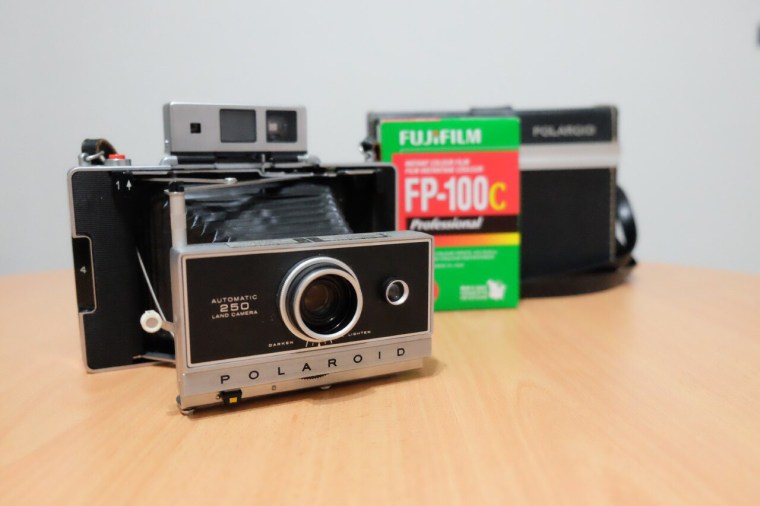







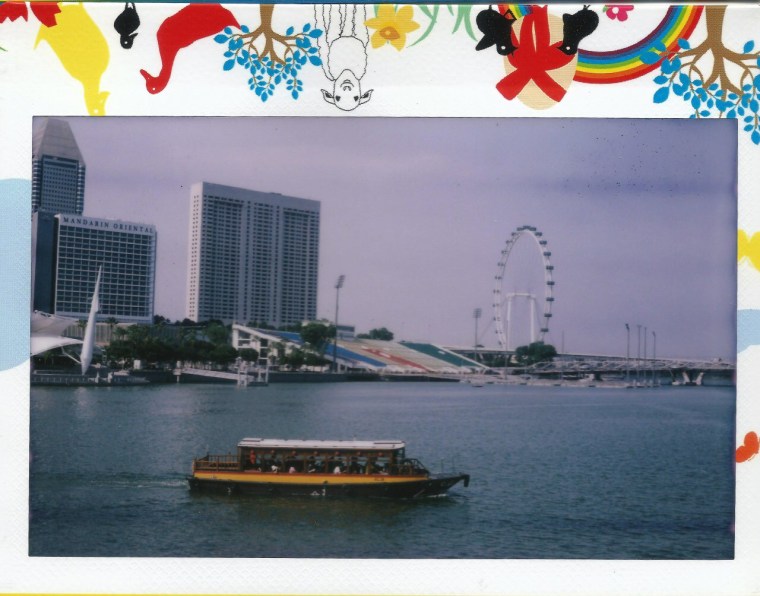




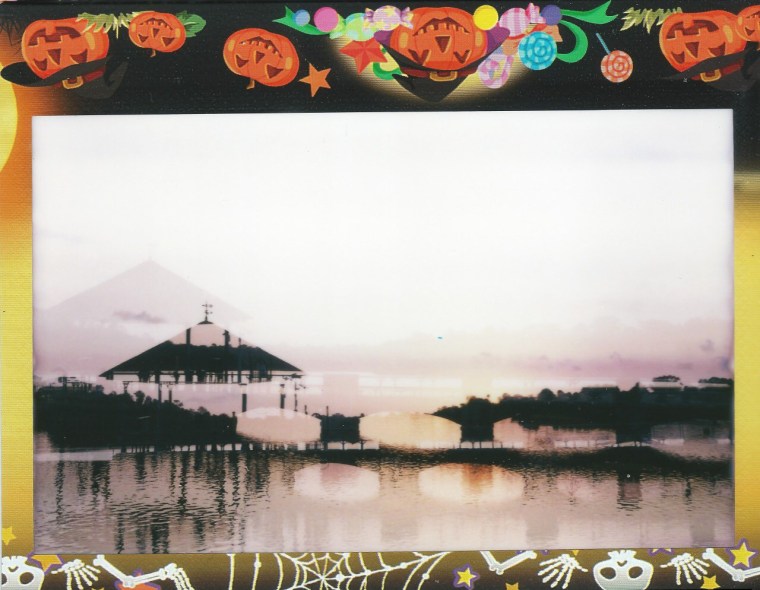

Hi! Your postbis creative and I wonder if polaroid 125 film that I have right now can be used with instax wide camera. Can you help to answer?
Thankss
LikeLike
Hello Nessia! Do you mean the old polaroid 125i film? Personally we have not tried using packfilm on an instax wide camera. I don’t think it’s possible, as the rollers are required to “transit” to the next frame. Hope this helps!
LikeLike
Hi, i just bought a Polaroid camera called ‘the button’ and it uses SX-70 film, however i want to create the emulsion lift but i dont know which one to get as there are quite a few different ones. there is this one that i was planning to get https://www.ebay.co.uk/p/Impossible-Project-Polaroid-Colour-Film-for-SX-70-Cameras/1269280215
do you think i will be able to use this for the emulsion process?
thank you
LikeLike
i want to get film that i can use for the emulsion lift, i have ‘the button’ polaroid camera that uses sx-70 film, but i dont know whether i can use it for the emulsion lift process as i have never used it before. can you tell me if its worth getting this?
Thank you.
LikeLike
Hello Asya, yes Impossible Project film can be use to create an emulsion lift. If you’re gettigng the button, the Red SX-70 160ISO Impossible Project film is the correct film for this button!
LikeLike
Thank you1 just bought it.
sorry for spamming you, i have an exam this week for photography so i needed the film asap :’)
LikeLike
Wow an exam for photography! So interesting! Let us know how it goes! All the best!
LikeLike
oh, and i was also wondering which SX-70 film should i get, as there are quite a few, but i do want one in colour.
LikeLike
Hi, I just recently bought my polaroid Landmark 100 camera and was wondering if Fuji Instant wide films will work with my camera?
LikeLike
Yes it will!
LikeLike
Hello from Greece.Happy new year.Great sit and great ideas also. I have a large instant camera collection and between those cameras i have a polaroid 250 land camera and an instax 500af. I was wondering if its possible to shoot instax wide through the steps i will tell you below :
1)Put an unopened instax wide pack on 500af which ejects automatically the first pic when you put the pack on the camera.
2)Put out of the 500af the pack and insert it on the polaroid land camera in a dark room
3)Put again the cartrige on the 500af and ejects automatically(without shooting) the first image.
My questions is:Will the instax wide cartrige fit without problem on the 250? As i was trying with an empty pack it seems to fit well.Instax wide cartrige is much smaller that the fp100c.
Any further information welcome .Thank you and keep doing this great job.
LikeLike
Hi Bill! Thanks for your comment! We haven’t tried fitting the instax wide cartridge in the 250. From experience – the land camera could not be closed! Have you tried it? Let us know!
LikeLike
Have you felt the conversion of your Land Camera 180 was worth it? Is the quality much better than what you’d get with a Lomo Wide, etc? I understand you have more control with the manual settings but just curious to know if you feel it was worth the investment to convert it or not now that you’ve used it.
LikeLike
Hi Alexis! Yes I think it’s worth the investment. Given that the instax wide film is cheaper than the discontinued packfilm, I can shoot the 180 with it cringing. Plus – this modification works with the Original 180 accessories too.
LikeLike
Hi guys,
With the Polaroid 250, what setting do you shoot on? It only has 75, 150, 300 and 3000….it doesn’t have iso 800!
Hope to hear from you! Love this blog and your insta!!
LikeLike
Hi David, we use the ISO setting as shutter speed settings. So, if you are shooting outdoors in bright sunlight, we use 3000 iso. Indoors – 75 iso (depending on light meter reading). Hope this helps!
LikeLike